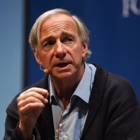New Orleans (La Nouvelle-Orléans ) is a consolidated city-parish located along the Mississippi River in the southeastern region of the U.S. state of Louisiana. With an estimated population of 391,006 in 2018, it is the most populous city in Louisiana. Serving as a major port, New Orleans is considered an economic and commercial hub for the broader Gulf Coast region of the United States. New Orleans is world-renowned for its distinct music, Creole cuisine, unique dialect, and its annual celebrations and festivals, most notably Mardi Gras. The historic heart of the city is the French Quarter, known for its French and Spanish Creole architecture and vibrant nightlife along Bourbon Street. The city has been described as the "most unique" in the United States, owing in large part to its cross-cultural and multilingual heritage. Founded in 1718 by French colonists, New Orleans was once the territorial capital of French Louisiana before being traded to the United States in the Louisiana Purchase of 1803. New Orleans in 1840 was the third-most populous city in the United States, and it was the largest city in the American South from the Antebellum era until after World War II. The city has historically been very vulnerable to flooding, due to such factors as high rainfall, low lying elevation, poor natural drainage and location next to multiple bodies of water. State and federal authorities have installed a complex system of levees and drainage pumps in an effort to protect the city. New Orleans was severely affected by Hurricane Katrina on August 29, 2005, which resulted in flooding more than 80% of the city, thousands of deaths, and so much displacement because of damaged communities and lost housing as to cause a population decline of over 50%. Since Katrina, major redevelopment efforts have led to a rebound in the city's population. Concerns about gentrification, new residents buying property in formerly closely knit communities, and displacement of longtime residents have been expressed. The city and Orleans Parish (paroisse d'Orléans) are coterminous. As of 2017, Orleans Parish is the third most-populous parish in Louisiana, behind East Baton Rouge Parish and neighboring Jefferson Parish. The city and parish are bounded by St. Tammany Parish and Lake Pontchartrain to the north, St. Bernard Parish and Lake Borgne to the east, Plaquemines Parish to the south, and Jefferson Parish to the south and west. The city anchors the larger New Orleans metropolitan area, which had an estimated population of 1,275,762 in 2017. It is the most populous metropolitan area in Louisiana and the 46th-most populous MSA in the United States.

